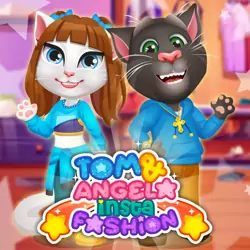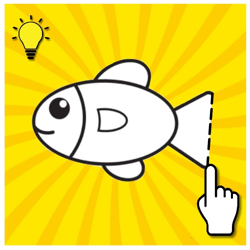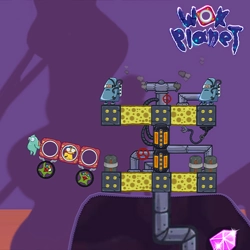Description:
Dive into an aquatic environment where you start as a friendly fish indulging in the consumption of plankton in a multiplayer setting. This multiplayer arena offers two unique game modes: a walkthrough and a survival arcade. Whichever mode you decide to engage in, it is sure to offer a fun and exciting experience for players to enjoy with friends or on their own.In this multiplayer world, the fish you control starts with a simple diet of plankton. With each consumption, your fish grows bigger, evolving into a much tougher, more dangerous predator. Soon enough, it can feast on the toothy predators it once feared, illustrating an underwater food chain. The unique twist with this multiplayer game is the growth and progression features that remain consistent throughout gameplay.
Two strikingly different variants of this multiplayer game present unique experiences tempting players to venture and explore on their own or with friends. The first variant, known as the walkthrough, operates under the concept of the growth and progression of your fish. As you devour more predators, your fish grows larger and stronger. This continuous growth feature creates a sense of accomplishment and progress as you navigate the waters, providing an interesting journey through aquatic life.
The second variant, the survival arcade, focuses on survival rather than growth. The waters are filled with dangerous predators right from the start, testing the player's skill and strategy while adding the thrill of imminent danger. Both these multiplayer game variants offer a challenging yet rewarding experience, all while taking you through the fascinating underwater hierarchy.
In the multiplayer game’s walkthrough mode, the progress of your fish's growth is candidly documented. What starts as a small fish feeding on plankton will evolve into one of the most ferocious predators in the waters. The more your fish grows, the more dangerous predators it encounters. This adds an element of thrill and anticipation which is not typically seen in other multiplayer games.
The multiplayer experience offers a unique look into the circle of life in aquatic ecosystems. It showcases the stark competition and survival tactics used by various species in the ocean. Not only does it engage players in an action-packed virtual experience, but it also provides them an opportunity to learn about the natural processes that define life underwater. Immerse yourself in this adventurous multiplayer game and watch as your fish ascends the underwater food chain.
Instructions:
Control: mouse, touch screen 1. Collect plankton floating in the water by clicking on the screen or on the left mouse button on the screen. If the fish has become a predator, eat other fish below the class. Click on the character icon, here you can see which fish you can eat. 2. The winner is the one who eats the required amount of food faster. See the account status, next to the icon. Each level has its own final result.What are Browser Games
A browser game or a "flash game" is a video game that is played via the internet using a web browser. They are mostly free-to-play and can be single-player or multiplayer.
Some browser games are also available as mobile apps, PC games, or on consoles. For users, the advantage of the browser version is not having to install the game; the browser automatically downloads the necessary content from the game's website. However, the browser version may have fewer features or inferior graphics compared to the others, which are usually native apps.
The front end of a browser game is what runs in the user's browser. It is implemented with the standard web technologies of HTML, CSS, JavaScript, and WebAssembly. In addition, WebGL enables more sophisticated graphics. On the back end, numerous server technologies can be used.
In the past, many games were created with Adobe Flash, but they can no longer be played in the major browsers, such as Google Chrome, Safari, and Firefox due to Adobe Flash being shut down on December 31, 2020. Thousands of these games have been preserved by the Flashpoint project.
When the Internet first became widely available and initial web browsers with basic HTML support were released, the earliest browser games were similar to text-based Multi-User Dungeons (MUDs), minimizing interactions to what implemented through simple browser controls but supporting online interactions with other players through a basic client–server model.[6] One of the first known examples of a browser game was Earth 2025, first released in 1995. It featured only text but allowed players to interact and form alliances with other players of the game.



